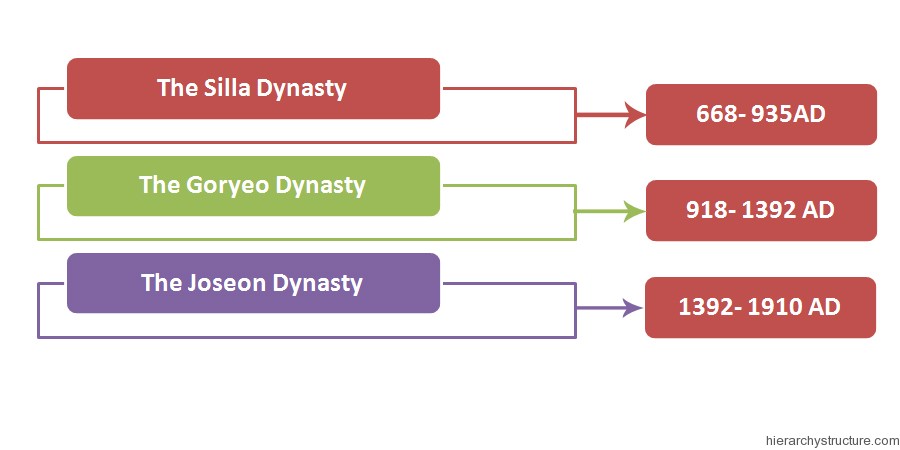Korea is located at the eastern end of Asia between China, Siberia and the islands of Japan. Korea is also divided into two versions such as North Korea and South Korea. The Korean history is a bit difficult to explain due to the complex historic relations of Korea with the adjacent areas such as China, Siberia, Japan and also United States in the recent times.
In this particular article, we have attempted to describe the ancient Korean hierarchy in a balanced way, which will give you an idea of the rise of civilization in Korea right from the kingdom age to the start of the economical period.

About the Rise of Civilization in Korea
In the initial periods, Korea was divided into tribes but as time passed, three main kingdoms emerged. The three kingdoms were Silla, founded in 57 BC by Bak Hyeokgeose; Goguryeo, founded in 37 BC by Jumong and Baekje, founded in 18 BC by Onjo. These three kingdoms were highly influenced by the Chinese civilization.
The Silla Dynasty (Period: 668- 935AD)
The Silla dynasty modernized its government and eventually strengthened its relationships with the newly established Tang dynasty. After a complex series of alliances and broken alliances among the various states of the region, Silla was able to defeat the other two kingdoms namely Goguryeo and Baekje and took control of a larger portion of the peninsula.
Buddhism was introduced into Korea in the 4th century AD and many Buddhist temples were built in the period.
In the late 8th century, the Silla kingdom began to break down. A warlord named Wang Geon formed a state named Goryeo in 918 after defeating his rivals and in 935 AD, became the ruler of Silla.
The Goryeo Dynasty (Period: 918- 1392 AD)
The Goryeo dynasty, founded by Wang Geon, extended the borders of the defeated unified Silla northwards into the parts of old Goryeo. In this period, the political system became even more complex, but the ancient Korean hierarchy was a strong Korean social concept at that time. In the Goryeo dynasty, the new classes that have emerged fell into six ranks in the order of importance such as:
- The royal caste group
- Yangban- A class of civil and military officials
- Palace functionaries of lower official rank
- Regional clerks and other lower government officials
- Tax -paying free citizens
- Butchers and market hunters
The Joseon Dynasty (Period: 1392- 1910 AD)
In the course of this dynasty, the peninsula was invaded by the Japanese in the late 16th century. The dynasty was founded by General Yi Songgye. In this new dynasty of ancient Korean hierarchy, various outstanding rulers and scholars were produced. Among them, king Sejong was known as the model king. The king surrounded himself with the finest scholars and conducted various important research projects.
Japan invaded Korea in 1592. But they were defeated by founder Yi Songgye. As a result, the Japanese were forced to withdraw. They invaded again in 1597 but they withdrew again in 1598.
In the 18th century, the kings clamped down on factionalism. Trade and commerce flourished in Korea and in the 19th century, Europeans arrived in Korea.
Know more about Korean Job Hierarchy Click Here
